Author guest post: Robert K. Liu
EVOLUTION OF US DESTROYERS 3D PRINTED VS METAL CAST

I collect and work on small scale naval models of WWII naval ships because I am interested in their history, technology and how they are made. Having only discovered the excellence of Nordzee models late in my collecting career, I now want to know more about 3D printed resin models, as they have reached a very high level of accuracy, although my observations are based largely on the products of one maker, Nanomaquettes. Because Jörg Niehage had to cancel his Kassel show space this year due to the pandemic, he was able to offer some of his ship kits at a very reasonable price; previously, I had purchased his finished Ville de Oran. Since I had a number of US destroyers of mid to late war designs, this also provided an opportunity to discuss the evolution of these highly active ships of the war, and to contrast 3D printed vs cast metal models.


I bought two 1940s US destroyers, the Farragut and Mahan, as seen in these orange resin 1:1250 models, finished except for yards on the masts. Due to the sophisticated printers that he uses, these resin models display extremely fine detail, so that structures are scale accurate, except possibly barrels of mgs, although since early shipboard 0.50 caliber mgs were water-cooled, their barrel diameters might not be that far off (Figs. 1-8). Even navigation rangefinders are shown on the bridges. The crispness of details when compared to cast metal models is very noticeable, especially with fine deck supports, ladders and boat handling equipment. As far as I can see, there are no printing artifacts like stairstepping, as in earlier generations of 3D printed ships. Instead of metal wires, he uses Nylon for masts, booms and gun barrels. Until 1942, US destroyers did not mount radars, so the only details I added were yards, which at that time, some were asymetrical. On one model, the mast was replaced by thin copper wire, as the Nylon was too flexible to work with. It is harder to glue yards onto Nylon, using cyanoacrylic glue, perhaps due to the very smooth surface of this plastic.

Having ended WW I with a large fleet of newly-built flush deckers, the US Navy did not really design and build new destroyer classes until the mid 1930s, with the Mahan and Farragut representatives of this period. These ship models make a good starting point when we look at evolution of destroyer armament and electronics, with the Fletcher class a good mid-war example, and Sumner/Winslow models marking late war ships.


Since Japan was likely the future opponent, US ships were designed with the vastness of the Pacific in mind, with a concentration on gun and torpedo armament. Fortunately, the Navy early on settled for the 5 inch 38 as the main gun battery for destroyers, capable of both surface and aerial gunnery, thus dual purpose or DP. When combined later with the Mk 37 gunnery director and the VT/proximity fuse, this combination resulted in perhaps the best destroyer gun of WW II. These guns were mounted as singles or duals, in light turrets forward, with aft guns often in half-turrets to save top weight or without any protection at all, as seen in Mahan and Farragut (Figs. 5, 6).

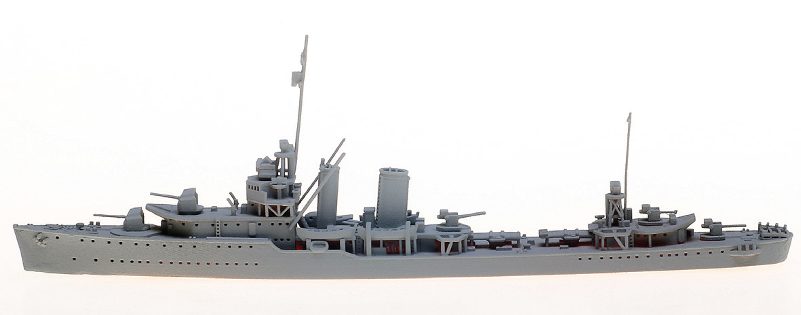
However, close range guns/AA were weak in early war DDs, consisting of water cooled 0.50 caliber machine guns, as was British practice. It was not until enough 20mm and 40mm AA became available did US destroyers have more adequate AA protection. According to analyses by the US Navy, it took almost 12,000 rounds to down an aircraft with .50 cal, vs half that for 20mm and only about 1700 rounds for a 40mm gun (Liu 2014).
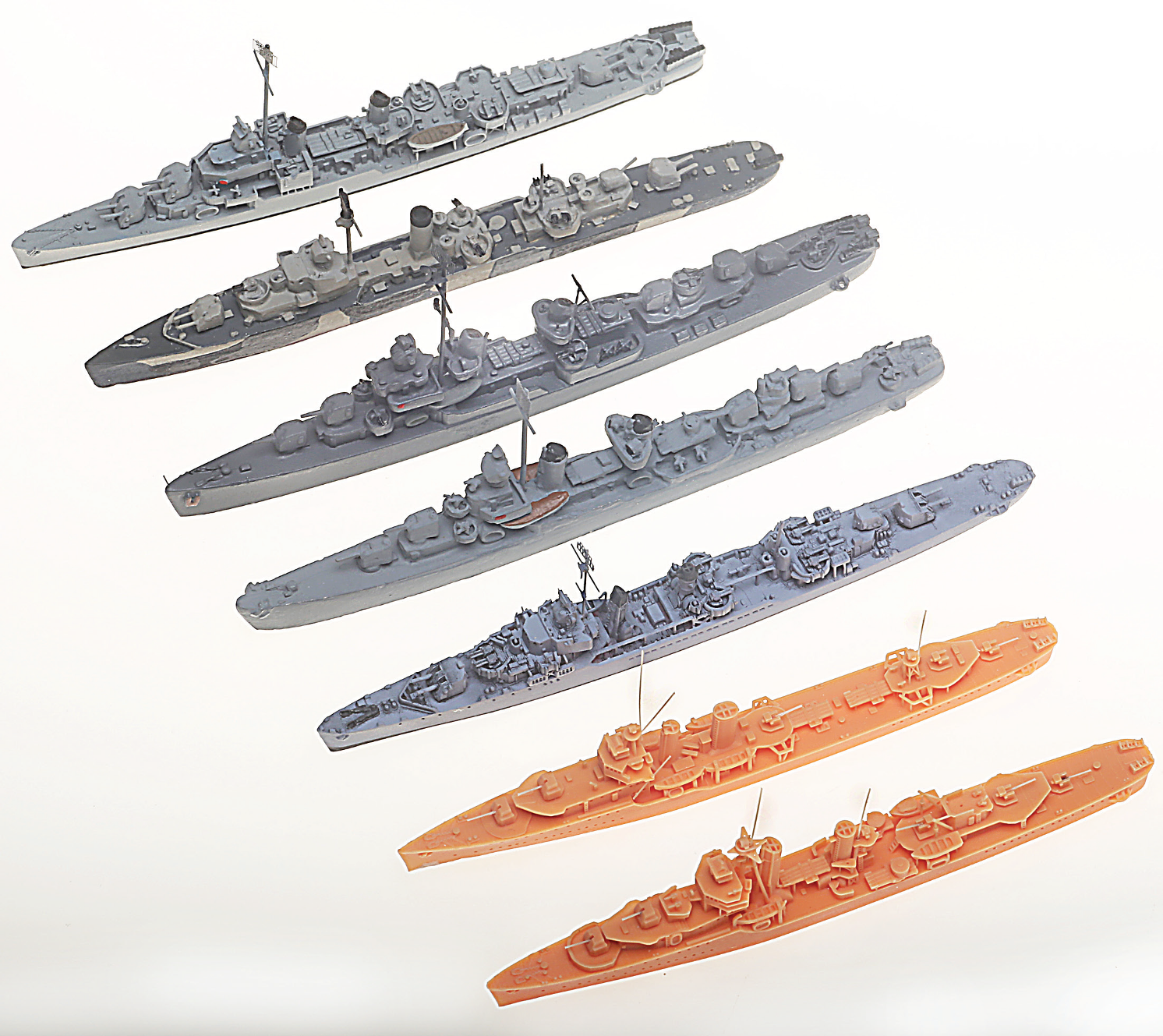
While US destroyers carried heavy 21 inch TT loads, our torpedoes functioned poorly until fairly late in the war, and were never as powerful as the 24 inch Long Lance torpedoes of the Japanese Navy. As the war progressed, with fewer opportunities to undertake torpedo attacks, and the aerial threat of kamikazes increased, TT tubes were landed so more medium and light AA guns could be installed, as was the case also with US PT boats, which switched from torpedoes to become gun ships, to attack smaller craft like Japanese landing craft. As sinkings and damage from suicide aircraft increased, even main battery guns were landed to add more 40mm AA, deemed the best for downing
such aircraft, as seen in USS Winslow, which replaced B turret with a quad 40mm and the dual-gun C turret with a single 5”38 turret, to save top weight and increase stability. Such measures still provided 5 main battery guns, like early DDs and even Fletcher class DDs, although Sumner and Somers class DDs carried these guns in fewer turrets.
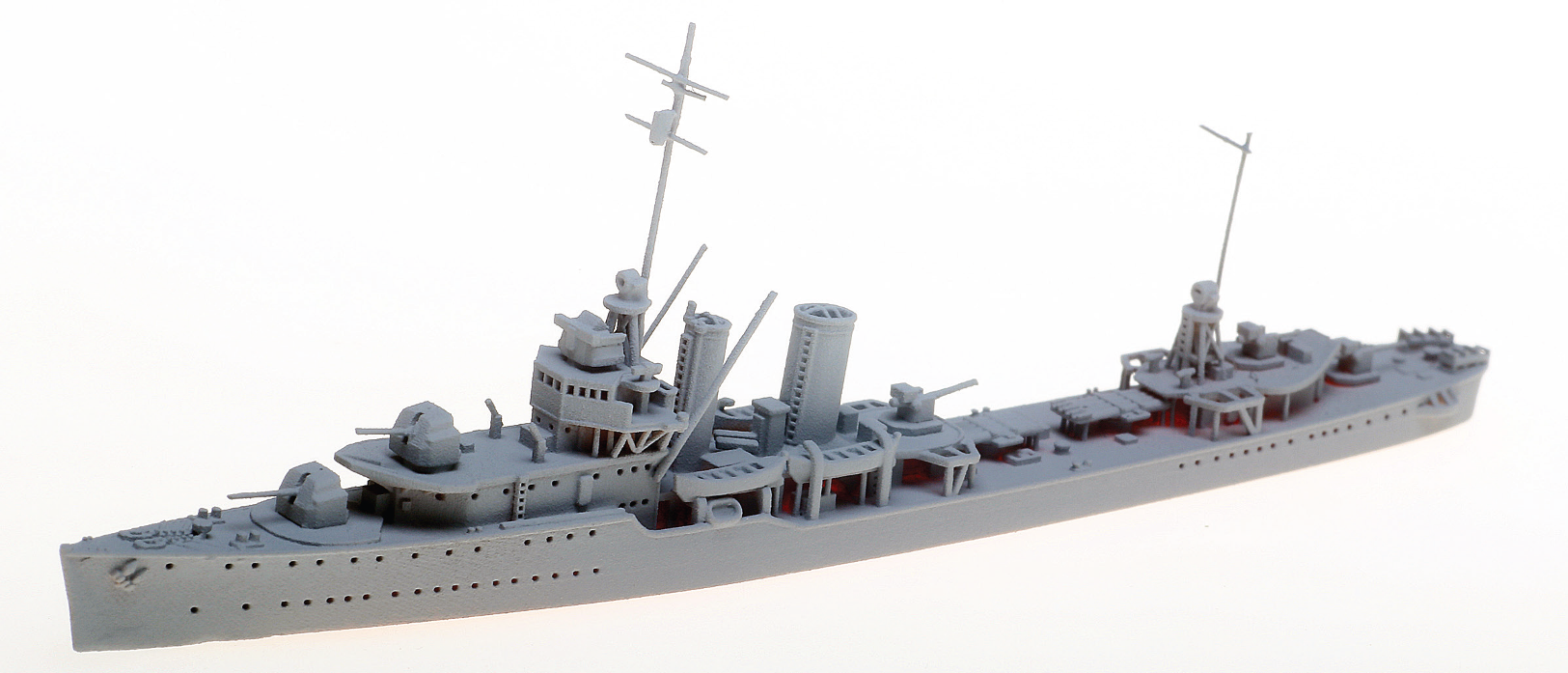
In comparing the AA armament of the 3D printed Mahan of 1940 vs the Winslow of 1944/45, the difference is startling. Both retain the same number of 5” 38s, Winslow having 3 gun mounts vs 5 for Mahan, with 4 mgs for the 1940 DD, and 3 quad, 2 dual 40mm for the Winslow. The Rezmet Davis, a Somers class DD, had a similar upgrade. This equates to an enormous difference in throw weight of the shells, in addition to that provided by the numerous single 20mm guns, which were often replaced by duals in 1944/45. Even with such formidable AA, American destroyers in the Okinawa and Philippine campaigns suffered enormous damage and losses to kamikaze aircraft. Between October 1944 and the end of the war in 1945, 42 US ships were sunk by suicide aircraft, which included 25 DDs sunk and 95 damaged (Liu 2014). One can only imagine how poorly US destroyers would have performed if they did not upgrade their AA and radar.
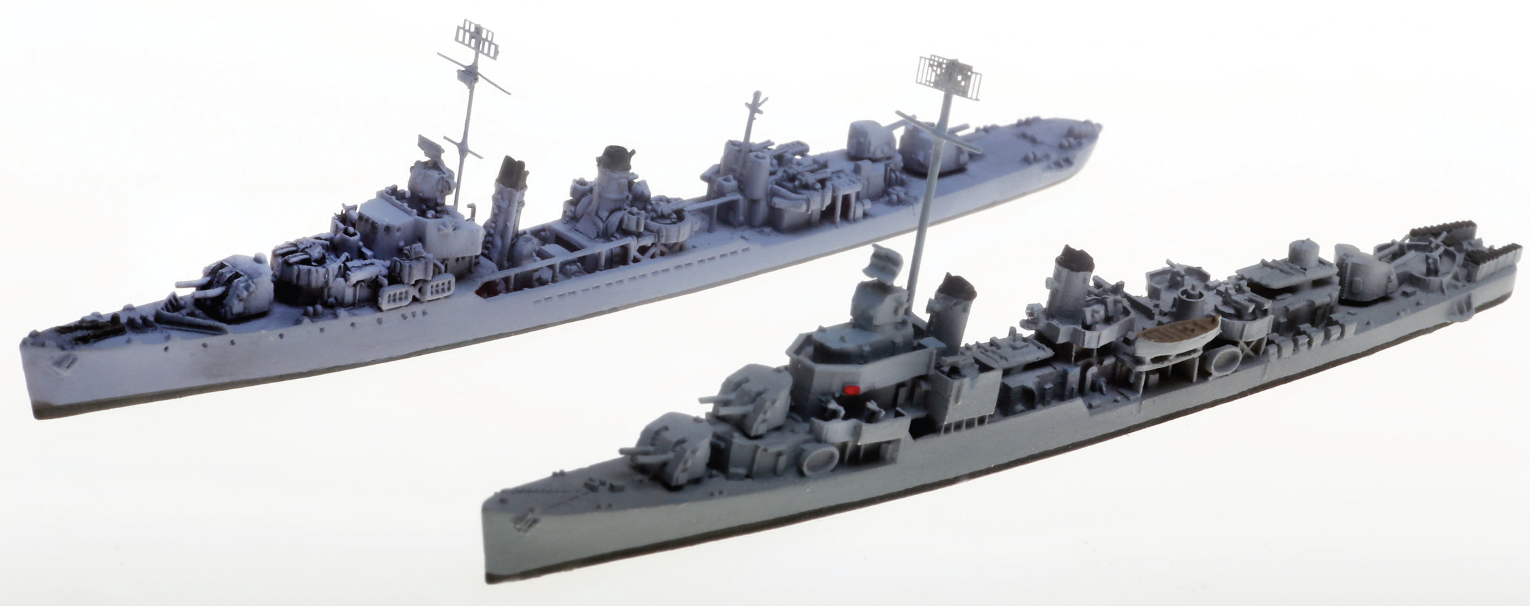
In comparison, British and Commonwealth DDs also used 20 and 40mm for close range AA, although their 40mm were either a combination of single, dual Bofors and often quad 2 pounder/40mm pom poms. No British DD appeared to have used the quad Bofors so favored by the US Navy. Japanese DDs used 13mm mgs, and predominately single, dual or three barrel 25mm AA. A few Japanese destroyers carried single 40mm, but these were not Bofors but antiquated pom poms. German DDs used 20mm and 37mm, possibly Norwegian produced 40mm Bofors. The quad Mauser 20mm was one of their most effective AA guns, much feared by Allied pilots.
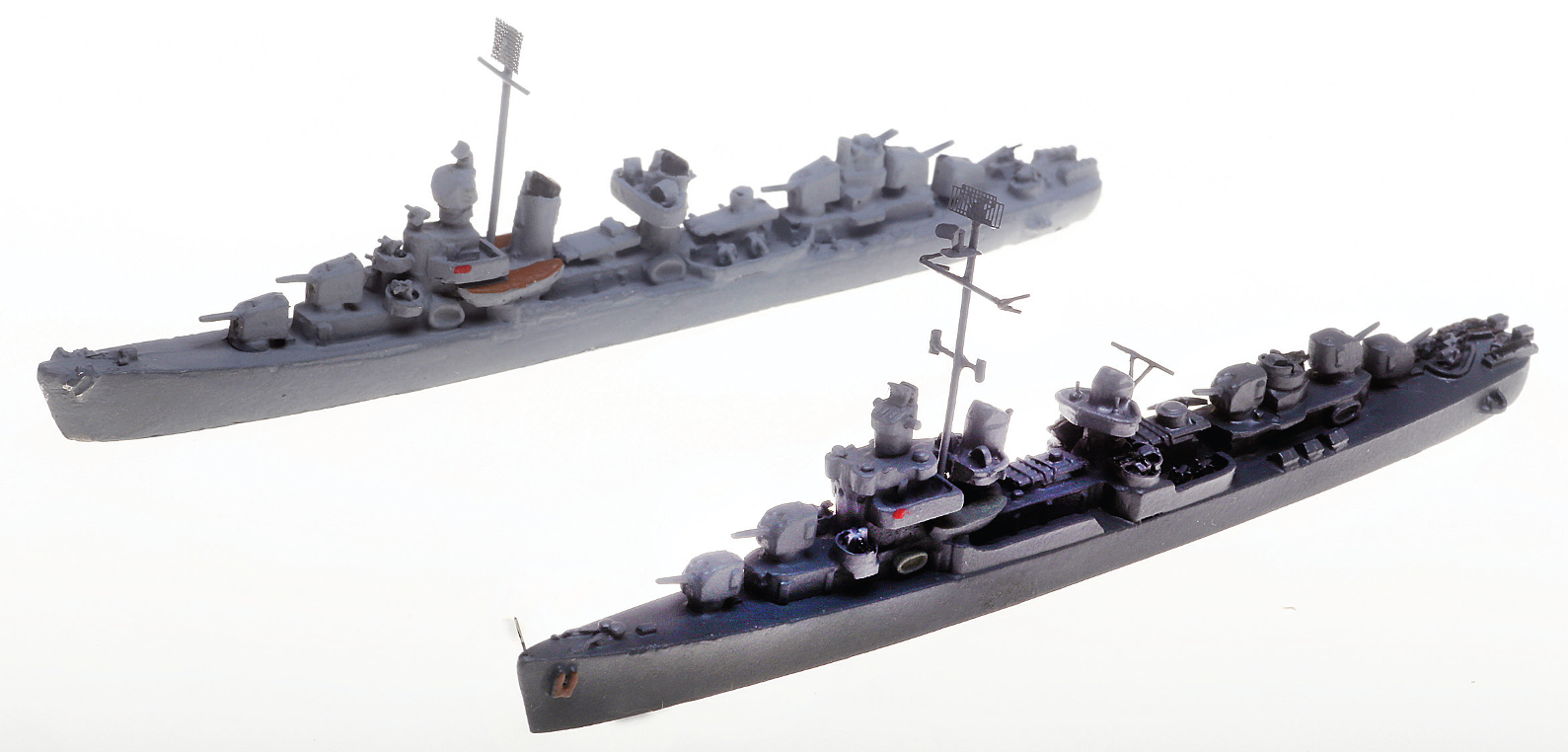
While it is obvious that 3D printing now can produce very fine models, certain structures like yards, radars, other electronic devices and perhaps gun barrels still cannot be done easily by this production method. For larger scale ship models, PE extras can now result in ships of astounding detail. If producers of PE would provide more than radars for 1/1200-1/1250 ships, modelers could achieve more realistic electronics, like that on Sea Vee models, like the frigate in Fig. 13. I have added fine bent wires to the yard of a Superior Fletcher, to simulate TBS antenna, and also some other mast structures, to achieve the cluttered appearance of late war ships (Fig. 12).
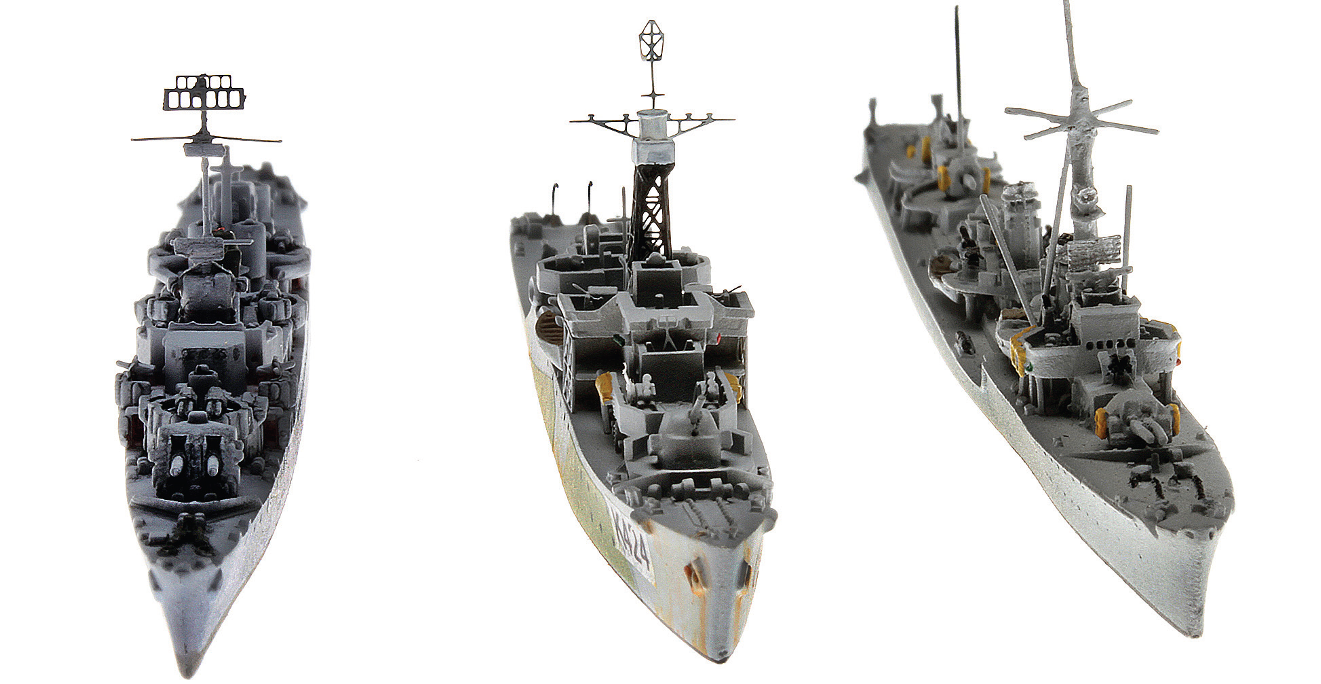
Most of the mid- to late- war US DDs have radar, with SC and SG on the masts, and Mk12/Mk22 on the forward gun director, although I have not seen any use of the Navalis PE radar version, as it seems too large, being substituted with cast metal ones. Besides the increase in electronics, it is readily noticeable that our destroyers all increased in length and beam, to accomodate more weaponry, fuel, the range required for Pacific operations and resulting often in an increase in speed.
REFERENCES/BIBLIOGRAPHY:
Friedman, N. 2013 Naval Anti-Aircraft Guns & Gunnery. Annapolis, U.S. Naval Institute Press:
399 p.
Hodges, P. and N. Friedman 1979 Destroyer Weapons of World War 2. Annapolis, U.S. Naval
Institute Press: 192 p.
Liu, R.K. 2014 Naval anti-aircraft in World War II. San Marcos, Robert K. Liu: 32 p.
—2021 Naval Ship Models of World War II in 1/1250 and 1/1200 Scales. Barnsley, Seaforth
Publishing: 160 p.
Scott Harmon, J. 1984 U.S.S. CASSIN YOUNG (DD-793). Missoula, Pictorial Histories
Publishing Company: 48 p.
Scutts, J. 1995 Fletcher DDs in action.Warship Number 8. Carrollton, Squadron Signal
Publications: 49 p.
Whitley, M.J. 1988 Destroyers of World War Two. An International Encyclopedia. Annapolis, U.S.
Naval Institute Press: 320 p.
Wright, M. 2014 British and Commonwealth WARSHIP CAMOUFLAGE of WW II. Annapolis,
U.S. Naval Institute Press: 160 p.
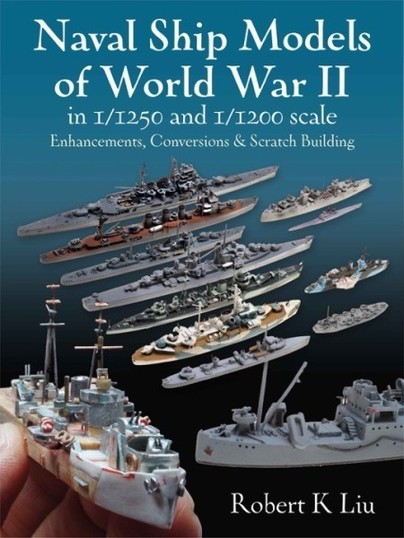
Order your copy of Naval Ship Models of World War II in 1/1250 and 1/1200 Scales here.

